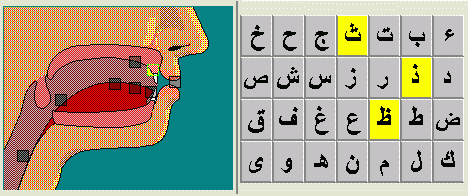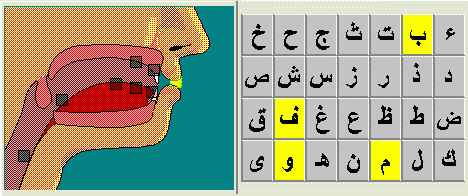1. Listening
comprehension Note and taking
a.
Introduction
Like many students, you may be initially very
worried about your listening skills. Academic listening usually involves trying
to follow a lecture or discussion in English and writing adequate notes on it.
If you have difficulties in doing this, you may not be sure whether the
problems are listening problems or language problems. In any case, much
listening to lectures or similar texts is essential.
There is also a need for you to be aware of the way
lectures are organised, the particular kind of language that is used in
lectures and making sure you know the language, particularly the pronunciation
of familiar words, of your own subject. I think the most important skill is for
you to learn to recognise the structure of lectures - the main points and
subsidiary points.
You need to practise:
- How
to take notes.
- Recognising
lecture structure: understanding relationships in the lecture - reference;
understanding relations within the sentence/complex sentences; importance
markers, signposts.
- Deducing
the meaning of unfamiliar words and word groups - guessing.
- Recognising
implications: information not explicitly stated; recognising the speaker's
attitude. Evaluating the importance of information - selecting
information.
- Understanding
intonation, voice emphasis etc.
- Listening
skills: skimming - listening to obtain gist; scanning - listening to
obtain specific information; selective extraction of relevant points to
summarise text; learning various ways of making sense of the words you
hear.
-
b. Advice
Your listening will improve quickly if you hear
English often - so make sure you do - films, television, anything. Any kind of
comprehension is also part of a scheme :
- understand
 learn
learn  have knowledge
have knowledge  understand more
understand more  learn more
learn more  have more knowledge
have more knowledge  understand more etc.
understand more etc.
So read around the topic before the lecture - or
read the newspaper if you want to understand the news on the radio.
For academic listening, particularly listening to
lectures, it will also be useful to learn about how the language works in
lectures in your subject. You can learn the language you need, learn about how
lectures are structured, and the various processes you go through to make sense
of the words and phrases you hear.
c. The Process
of listening
1. Introduction
You listen with your brain and your ears. Your
brain makes meaning out of all the clues available. When you are listening
sounds are an important clue. But you also need to make use of your
knowledge.Your ears pick up sounds; your brain makes the meanings.
The two main parts of the listening process are:
bottom up listening means making as much use as you can of the low level clues. You start by
listening for the individual sounds and then join these sounds together to make
syllables and words. These words are then combined together to form phrases,
clauses and sentences. Finally the sentences combine tgether to form texts or
conversations.
top down listening means making as much use as you can of your knowledge and the situation.
From your knowledge of situations, contexts, texts, conversations, phrases and
sentences, you can understand what you hear.
2.
Interaction
Of course, good listeners need to make use of the
interaction between both types of listening. For example, if you hear the sound
/ðɛə/,
it is only the context that will tell you if the word is "there",
"their" or perhaps "they're". Your knowledge of grammar
will tell you if /kæts/ is "cats" or "cat's", which may be
"cat is" or "cat has".
d. Summarising and
note taking
1. Purposeful
Listening is purposeful. The way you listen to
something will depend on your purpose. You listen to different texts in
different ways. In everyday life, you usually know why you are listening. You
have a question and you read to find the answer. You usually know how the news
programmes on the radio or organised - usually a quick headline followed by
details. You know the sports results follow the main news items, so if you want
to know the sports results, you wait until it is time.
You do not listen to every word of the news items.
When you read a story or a play, it is different. You start at the beginning
and listen to the end. In academic listening, you need to be flexible when you
listen - you may need to listen carefully at the beginning to find out
what is going to come, then listen less carefully until you hear what
you want to know.
General efficient listening strategies such as
scanning to find the correct part of the lecture, skimming to get the gist and
careful listening of important passages are necessary as well as learning
about how texts are structured in your subject.
2. Interactive
Listening is an interactive process - it is a
two-way process. As a listener you are not passive but active. This means you
have to work at constructing the meaning from the sounds heard by your ears,
which you use as necessary.
You construct the meaning using your knowledge of
the language, your subject and the world, continually predicting and assessing.
You need to be active all the time when you are listening. It is useful,
therefore, before you start listening to try to actively remember what you
know, and do not know, about the subject and as you are listening to, to
formulate questions based on the information you have. Title, sub-titles and
section heading can help you formulate question to keep you interacting.
e.
Recognising
lecture structure
Several studies (e.g. Chaudron & Richards,
1986; DeCarrico & Nattinger, 1988) have suggested that explicit signals of
text structure are important in lecture comprehension. Listening for these
signals can therefore help you understand the lecture.
Signals
The tables below show some of the most common
signals used in lectures to indicate structure (Leech & Svartvik, 1975).
Listen for them in your lectures.
- Introducing
- Giving
background information
- Defining
- Enumerating/Listing
- Giving
examples
- Showing
importance/Emphasising
- Clarifying/Explaining/Putting
it in other words
- Moving
on/Changing direction
- Giving
further information
- Giving
contrasting information
- Classifying
- Digressing
- Referring
to visuals
- Concluding
1.
Introducing
At the beginning of a lecture, or a section of a
lecture, the lecturer will give you some idea about the structure of the
lecture. Listen for these signals as it will help you understand what the
lecturer is saying.
What I
intend to say is
What I'd like to do is to discuss
What I intend to do is to explain
In my talk today,
My topic today is
Today, I'm going to talk about
I'm going to talk to you about
My colleagues and I are going to give a short presentation on
Today I want to consider
In this talk, I would like to concentrate on
The subject of this talk is
The purpose of this talk is to
This talk is designed to
|
.
|
6. Showing importance/Emphasising
When you are taking notes, you cannot write down
every word. You need to distinguish between important and less important
information. The lecturer can use these signals to draw your attention to the
important points.
I want to
stress
I want to highlight
I'd like to emphasise
I'd like to put emphasis on
It's important to remember that
We should bear in mind that
Don't forget that
The crucial point is
The essential point is
The fundamental point is
|
.
|
Furthermore,
What's more,
This supports my argument that,
It follows, therefore, that
What (in effect) we are saying is
|
.
|
|
|
|
|
|


























